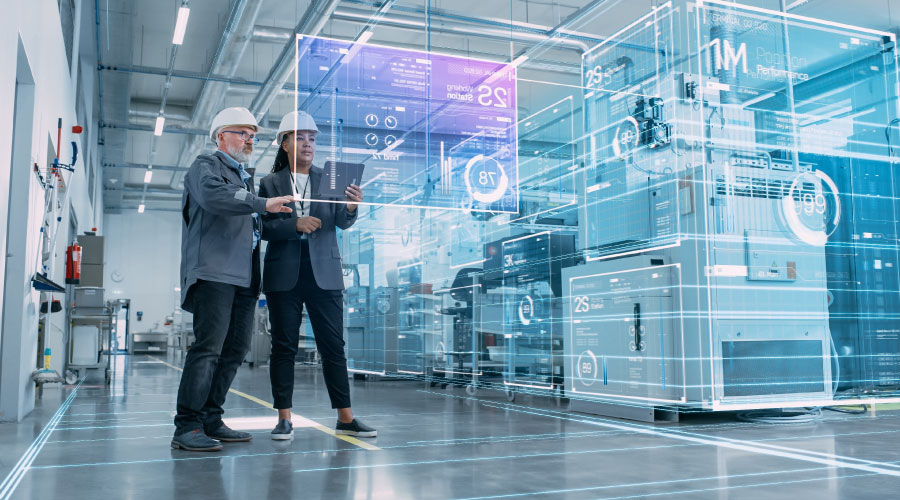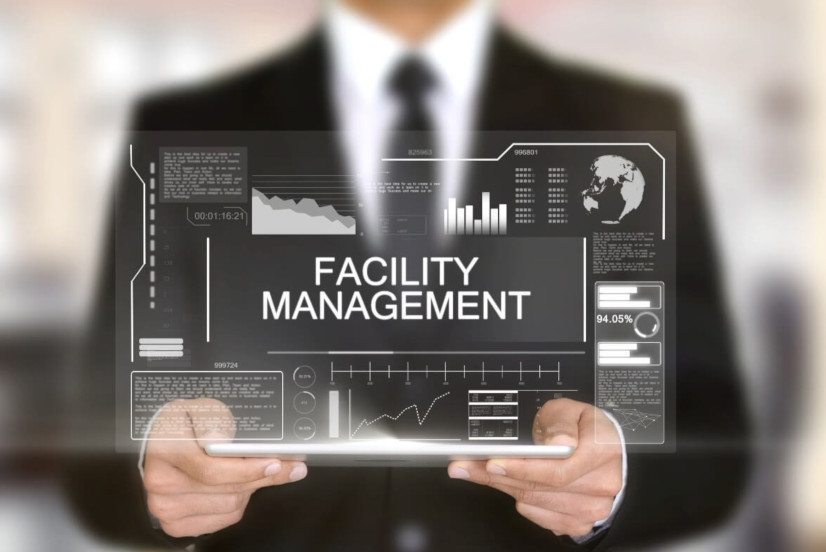Facility Management-- Streamlined Procedures and Expense Cost Savings
Facility Management-- Streamlined Procedures and Expense Cost Savings
Blog Article
Secret Fads Shaping the Future of Facility Management in 2024
As we expect 2024, the landscape of facility management is poised for significant makeover, driven by several essential trends. The integration of clever building innovations and a change towards data-driven decision-making promise to enhance functional performance while prioritizing sustainability in method. Moreover, the appearance of hybrid work versions is reshaping office settings, necessitating innovative style solutions that satisfy progressing staff member demands. In the middle of these modifications, the focus on owner health remains to gain grip, highlighting the relevance of a healthy and balanced office. How these fads will certainly manifest in method remains a critical concern for market specialists.
Smart Building Technologies

Smart building modern technologies incorporate a wide variety of systems, consisting of intelligent illumination, a/c controls, and safety and security systems. By integrating these systems, center managers can monitor and change specifications in real-time, bring about considerable decreases in power waste and functional costs. As an example, smart sensing units can detect tenancy levels and change lights and temperature level accordingly, making sure that energy is just made use of when necessary.
Moreover, these technologies assist in improved information collection, allowing companies to track usage patterns and recognize possibilities for additional enhancements. The implementation of smart building innovations not just adds to sustainability objectives but also develops healthier work atmospheres that can increase staff member productivity and satisfaction.
As we relocate right into 2024, the adoption of clever structure innovations will likely increase, mirroring a wider shift in the direction of more smart, receptive, and sustainable facility monitoring techniques.
Data-Driven Choice Making
Significantly, companies are leveraging data-driven decision making to boost facility administration techniques. By harnessing data analytics, facility supervisors can derive actionable understandings that significantly enhance operational performance and resource allotment. The combination of innovative modern technologies, such as IoT sensors and real-time monitoring systems, allows the collection of huge amounts of information on building performance, tenancy rates, and energy usage.
This riches of details allows facility managers to recognize fads, forecast maintenance needs, and proactively address concerns before they intensify. As an example, anticipating analytics can forecast devices failures, minimizing downtime and fixing costs. Furthermore, information visualization tools assist in much better interaction amongst stakeholders, making sure that educated decisions are made collaboratively.
Moreover, data-driven techniques boost critical preparation by enabling center supervisors to examine the effectiveness of present practices and make informed choices relating to financial investments in technology or infrastructure. As companies progressively prioritize operational excellence, data-driven choice production is positioned to become a keystone of effective facility management methods in 2024 and beyond. Ultimately, the ability to leverage information effectively will empower companies to develop much more effective, productive, and durable facilities.
Sustainability and Green Practices
The emphasis on data-driven choice making normally straightens with the growing concentrate on sustainability and eco-friendly practices within center administration. As companies increasingly prioritize environmental duty, facility supervisors are leveraging analytics to maximize source usage, decrease waste, and decrease carbon impacts. This strategic approach allows the integration of energy-efficient systems, such as LED illumination, wise cooling and heating controls, and sustainable energy resources into center operations.
Furthermore, the application of sustainable practices expands past power usage. Facility managers are adopting environmentally friendly materials and advertising reusing campaigns to create a circular economic situation within their facilities. This not only boosts the environmental profile of the company yet additionally promotes a society of sustainability amongst staff members.
Compliance with environmental policies is an additional crucial aspect driving the fostering of eco-friendly practices. By making use of data analytics, center supervisors can keep track of compliance metrics and determine locations for renovation, ensuring adherence to international and neighborhood sustainability requirements.
Crossbreed Job Models
A substantial shift in the direction of hybrid job models is reshaping the landscape of facility administration in 2024. This paradigm combines remote and in-office work, necessitating a reevaluation of area utilization, resource allotment, and worker engagement techniques. Organizations are progressively identifying the significance of adaptable workspaces that deal with diverse demands and choices.
Center managers need to adapt by implementing flexible office layouts that sustain collective efforts while offering locations for concentrated work. This consists of the assimilation of modern technology to help with seamless interaction and cooperation among in-office and remote workers. Smart structure options, equipped with analytics and sensors, permit real-time dig this surveillance of room usage, making it possible for organizations to optimize their settings successfully.
In addition, crossbreed job designs highlight the demand for efficient center administration that prioritizes employee experience. In essence, the hybrid job design is reinventing facility management, encouraging a proactive approach to fulfill the advancing needs of the labor force.
Boosted Passenger Health
As companies welcome hybrid work designs, an increased concentrate on resident wellness is becoming important to facility management strategies. Facility Management. This change acknowledges that a healthy and balanced and satisfied labor force directly influences performance and retention prices. Facility managers are currently focusing on settings that advertise physical and psychological health, incorporating aspects such as all-natural illumination, biophilic style, and available wellness resources

Modern technology plays an essential role in this evolution. Smart building systems can monitor environmental elements and change settings in real-time, guaranteeing optimal comfort degrees - Facility Management. In addition, comments systems, such as occupancy sensors and staff member studies, enable facility supervisors to continuously fine-tune wellness helpful site efforts based on occupant demands.

Final Thought
In 2024, the future of center management will certainly be significantly influenced by the assimilation of smart structure modern technologies and data-driven decision-making, cultivating boosted functional effectiveness. These trends collectively highlight the progressing landscape of center management in reaction to contemporary challenges and opportunities.
Center supervisors are advertising and adopting environmentally friendly products recycling efforts to develop a circular economy within their centers.A substantial change towards hybrid job designs is reshaping the landscape of facility administration in 2024.Furthermore, hybrid job designs emphasize the demand for efficient center administration that prioritizes staff member experience.As organizations welcome hybrid job models, a heightened emphasis on resident health visit this site is ending up being indispensable to center management techniques.In 2024, the future of center administration will certainly be substantially influenced by the assimilation of smart structure innovations and data-driven decision-making, fostering boosted operational performance.
Report this page